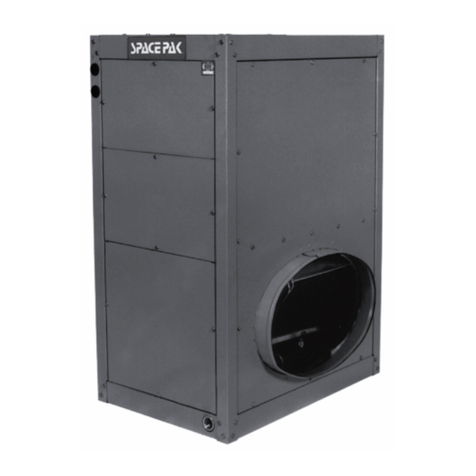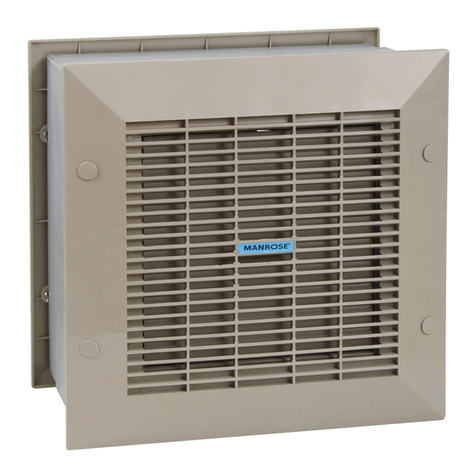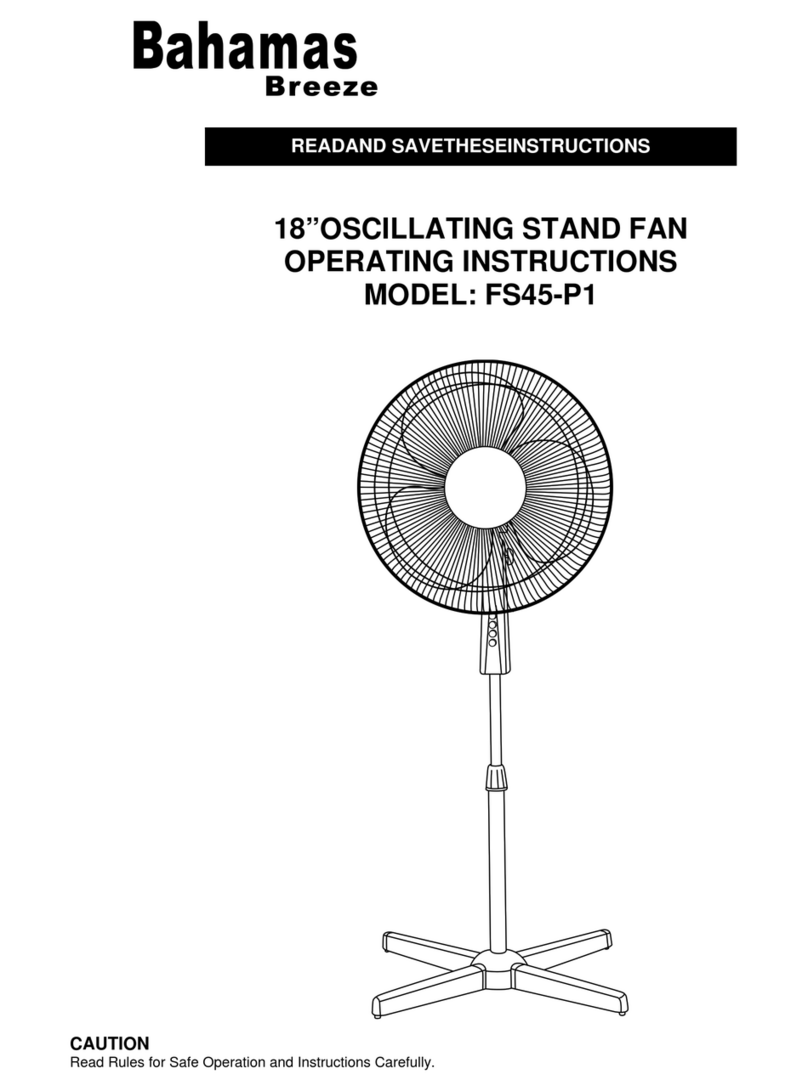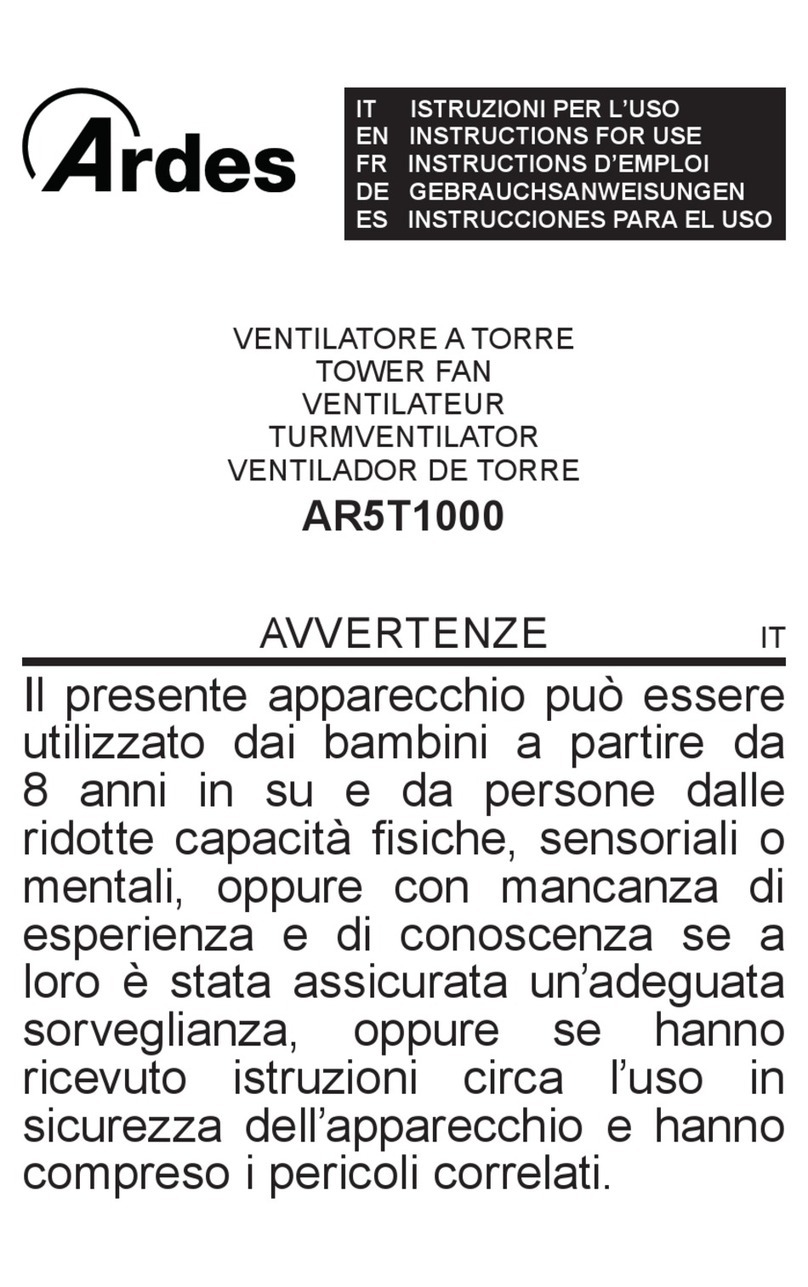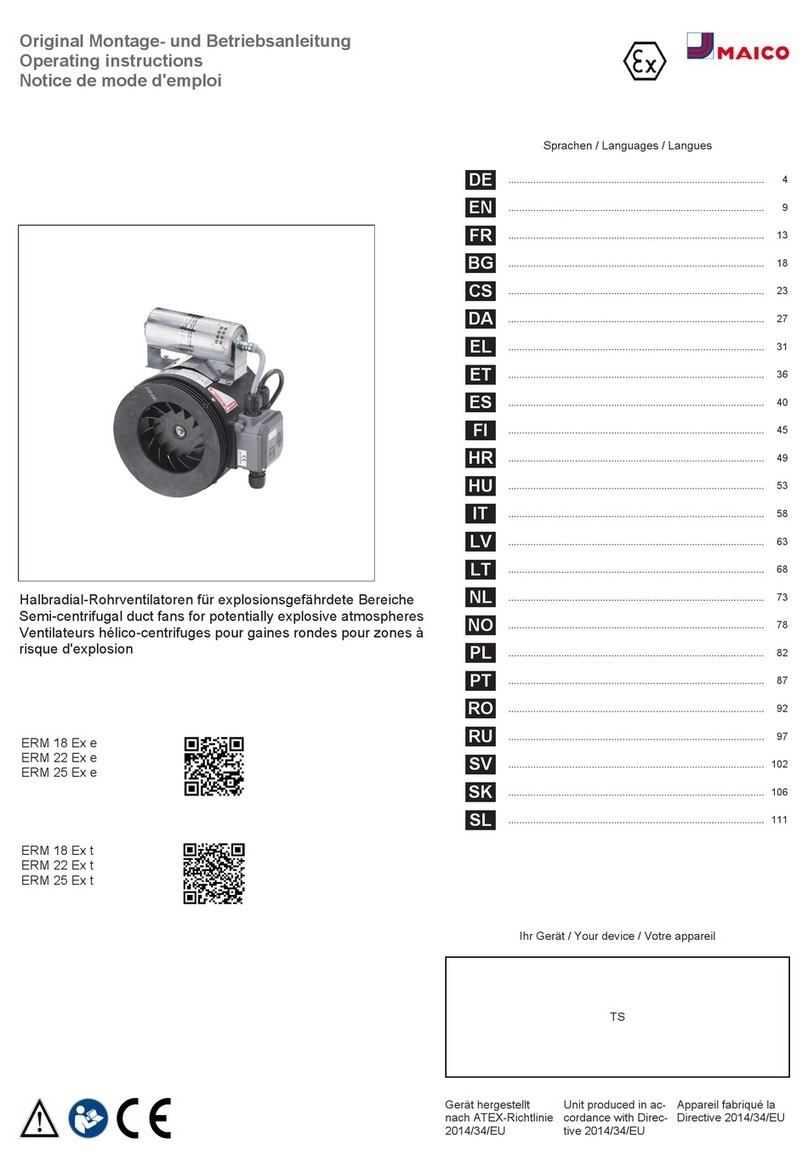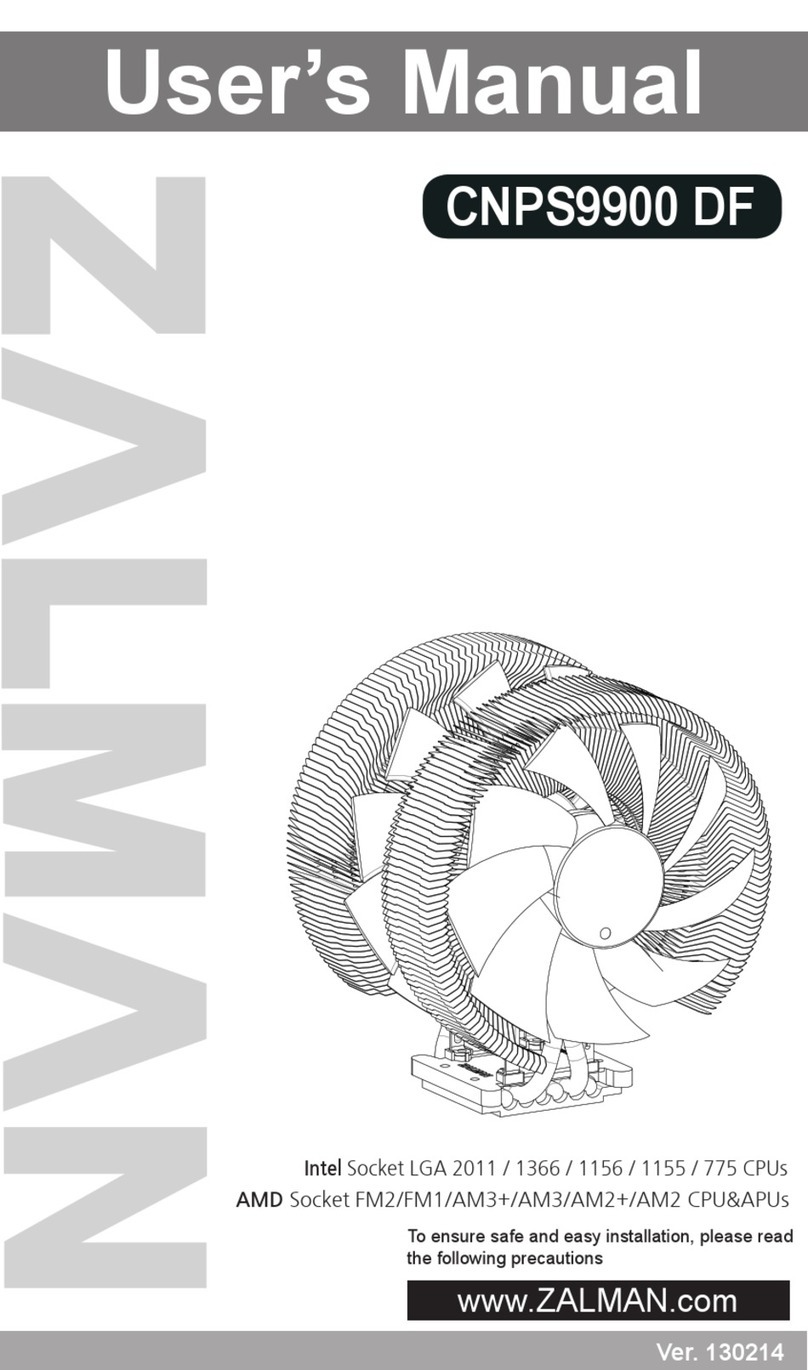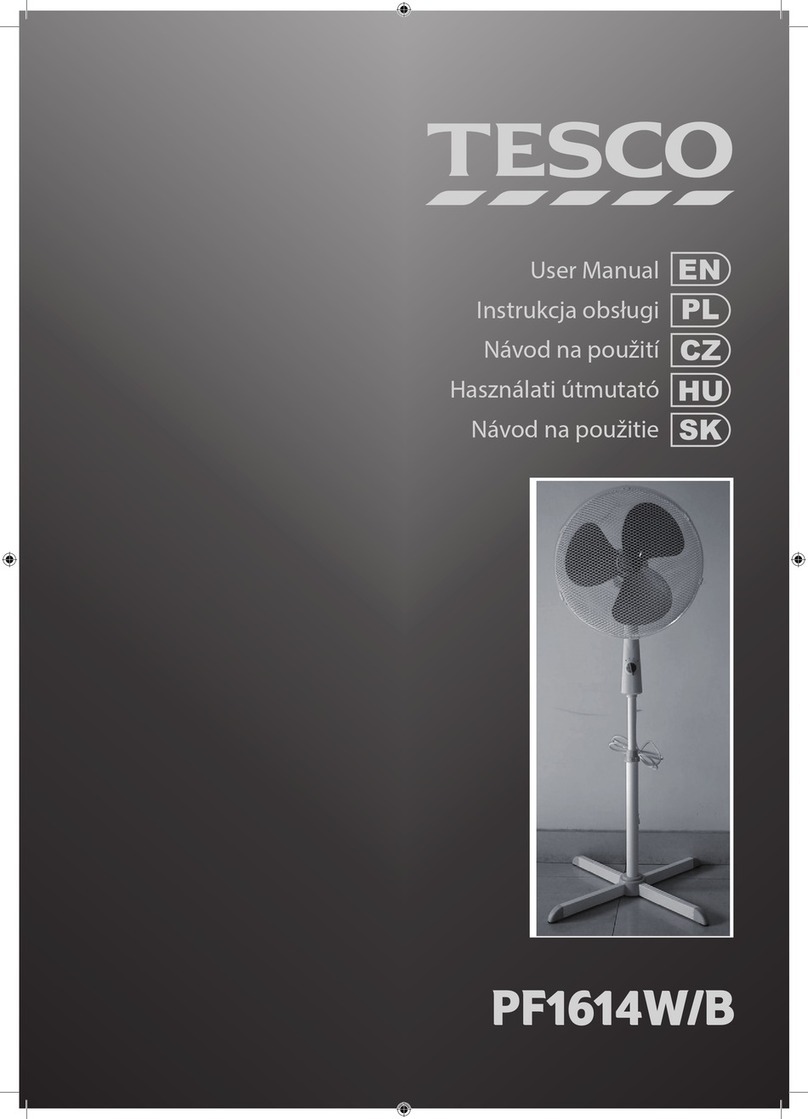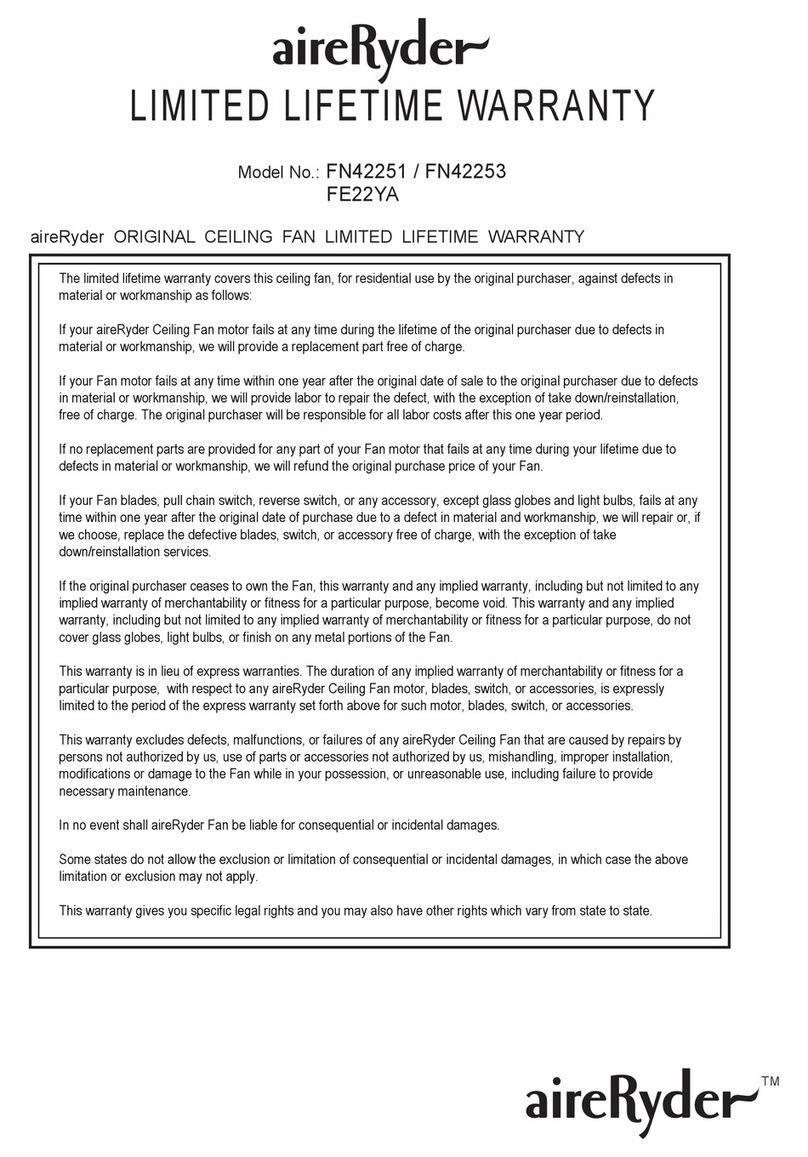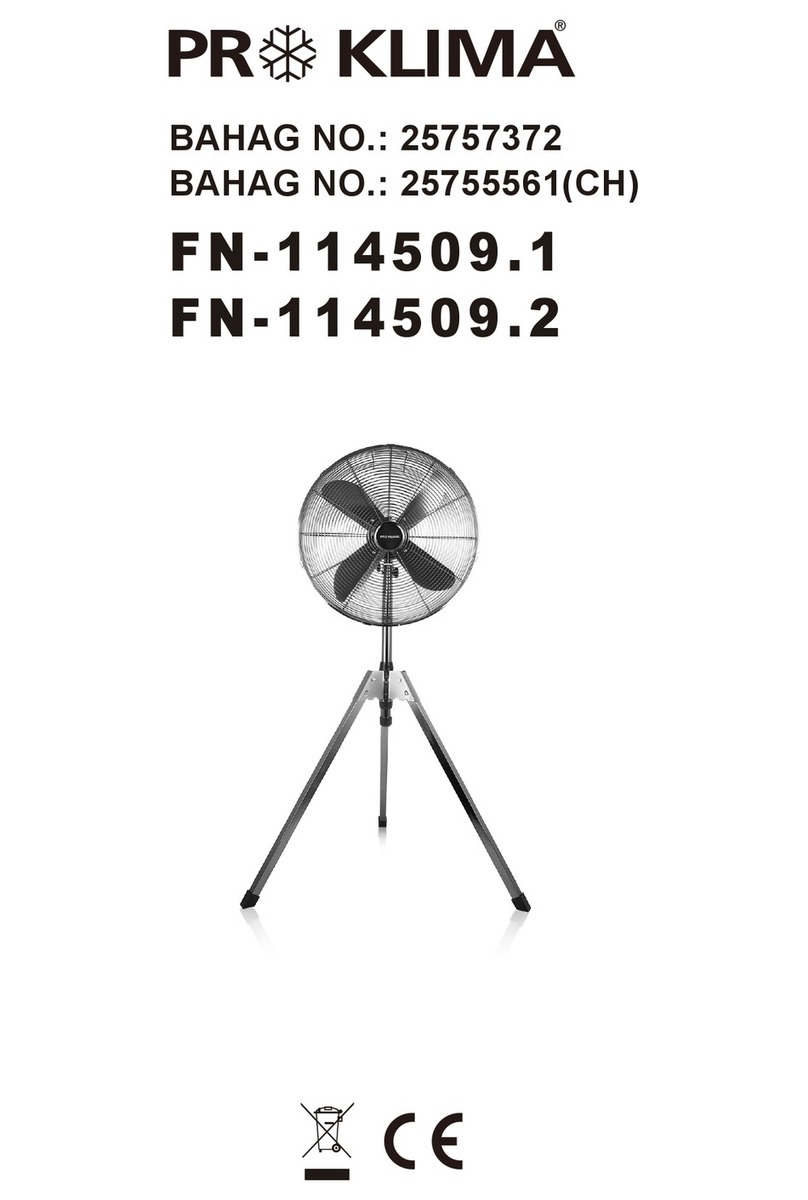Space Pak ESP-J Instruction manual

SECTION 1: INTRODUCTION
SpacePak System Design........................................
Code Compliance.....................................................
Air Distribution Requirements...................................
Model Number Description.......................................
Air Distribution Components.....................................
High Altitude Guidelines............................................
Shipment of Unit.......................................................
SECTION 2: SYSTEM INSTALLATION
Step 1: Locating The Unit.........................................
Step 2: Cutting Return Air Opening..........................
Step 3: Attaching Supply Air Plenum Adapter...........
Step 4: Setting The Unit............................................
Step 5: Connecting Refrigerant Lines.......................
Step 6: Installing The Condensate Trap & Line....
Step 7: Installing Air Distribution Components.....
Step 8: Retrofit to B & C Series Units...................
Step 9: Wiring The Unit..............................................
Layouts.................................................................
2
2
2
2
3-6
6
6
7
10
10
11
12
13-17
13-17
17,18
19
20-24
SECTION 3: START-UP & COMMISSIONING
Controls Overview................................................
System Commissioning.......................................
Charging Cooling Only Systems..........................
Factors Affecting the Balance of the System.......
SECTION 4: MAINTENANCE & TROUBLESHOOTING
Before Each Cooling Season................................
If System Fails To Operate....................................
Troubleshooting Guide..........................................
Troubleshooting Flow Charts................................
Service/Troubleshooting Form..............................
Parts List...............................................................
WARRANTY INFORMATION.................................
26-36
37
37
38
39
39
40, 41
42-45
46
47,48
49
IN UNITED STATES: 260 NORTH ELM ST. WESTFIELD, MA 01085 (413) 564-5530/FAX (413) 564-5815
IN CANADA: 7555 TRANMERE DRIVE, MISSISSAUGA, ONTARIO, L5S 1L4 (905) 670-5888/FAX (905) 670-5782
Central Air Conditioning Series
2 to 5 Tons
Fan Coil Unit/Air Supply
Components
MODEL
ESP-J & ESP-JV
INSTALLATION,
OPERATION
& MAINTENANCE
MANUAL
ESPJ2-0323
45W30-WG1283

2
SPACEPAK SYSTEM DESIGN
SpacePak is a hi-velocity central air conditioning system
which utilizes a conventional outdoor condensing unit
matched with the indoor Model ESP-J fan coil unit to
provide conditioned air through the specially-designed,
pre-fabricated, pre-insulated flexible duct system. The
system and its basic components operate the same as
in any conventional air-to-air cooling system.
The SpacePak system is covered by the following U.S.
Patents: 3,507,354; 3,575,234; 3,596,936; 3,605,797;
3,685,329; 4,045,977; 4,698,982; 926,673 and Canadian
Patents: 891,292; 923,935; 923,936.
CODE COMPLIANCE
Fan coil unit installation must conform to the require-
ments of the local authority having jurisdiction or, in the
absence of such requirements, to the National Board of
Fire Underwriters regulations. Fan coil unit meets ETL
listing requirements.
All electrical wiring must be in accordance with the
National Electrical Code ANSI/NFPA No. 70-latest edition
and any additional state or local code requirements. If an
external electrical source is utilized, the fan coil unit,
when installed, must be electrically grounded.
NOTICE: It is a requirement of the International
Mechanical Code (307.2.3) to install a secondary
drain or an auxiliary drain pan where damage to any
building components will occur as a result of over-
flow from the equipment drain pan or stoppage in
the condensate drain piping from a cooling or an
evaporator coil. Follow local code requirements.
AIR DISTRIBUTION SYSTEM COMPONENT
REQUIREMENTS
Air distribution components installation must conform to
the requirements of local authority having jurisdiction or,
in the absence of such requirements, to the National Fire
Protection Association 90A or 90B.
Do not begin the installation of the system without
performing a load calculation to determine heat gain,
system layout and material take-off. If a layout plan is
not already available and room terminator requirements
determined, then refer to the SpacePak Application
Manual, SP9, to complete this information. A description
of air distribution system components is shown in Figure
1.1.
SECTION 1: INTRODUCTION
The following terms are used throughout this
manual to bring attention to the presence of potential
hazards or to important information concerning the
product:
Indicates an imminently hazardous
situation which, if not avoided, will result in death,
serious injury or substantial property damage.
Indicates an imminently hazardous
situation which, if not avoided, could result in
death, serious injury or substantial property damage.
Indicates an imminently hazardous
situation which, if not avoided, may result in minor
injury or property damage.
NOTICE: Used to notify of special instructions on
installation, operation or maintenance which are
important to equipment but not related to personal
injury hazards.
ESP-J - MODEL NUMBER DESCRIPTION
1 2 3 4 5 6 7 8 9 10 11 12
UT CA SE CT RT CF RV
1,2,3, - Unit Type [UT] 9 - Cabinet Type [CT]
ESP - Evaporator DX Fan Coil Unit H - Horizontal
4,5,6,7 - Capacity [CA] V - Vertical
2430 - 24,000 to 30,000 BTU/Hr. (2-21/2tons) 10 - Refrigerant Type [RT]
3642 - 36,000 to 42,000 BTU/Hr. (3-31/2tons) 4 - R410A
4860 - 48,000 to 60,000 BTU/Hr. (4-5 tons) 11 - Cabinet Feature [CF]
8 - Series [SE] M - Modified
J - "J" series 12 - Revision [RV]
A - Standard Control (blue board)
B - Advanced Control (black board)
C - Revised Assemblies

3
FIGURE 1.1: AIR DISTRIBUTION SYSTEM COMPONENTS
RETURN AIR BOX (BM-9149, AC-RBF-3, BM-9169):
Each includes filter grill with metal frame, permanent
filter, and 2 clamp bands. BM-9149 is for ESP-2430J.
AC-RBF-3 is for ESP-3642J and BM-9169 is for ESP-4860J.
RETURN AIR DUCT (BM-6808-10, BM-6809-10,
BM-6839-10): Flexible, 10 feet long with round shape.
BM-6808-10 (15" dia.) for ESP-2430J. BM-6809-10 (19"
dia.) for ESP-3642J and BM-6839-10 (24" dia.) is for
ESP-4860J.
PLENUM ADAPTER: 9" round OR 10" X 10" square
metal component to attach plenum duct to fan coil unit.
PLENUM DUCT & COMPONENTS: May be 9" round
sheet metal or 10" X 10" (O.D.) square, fiberboard duct
types as specified by the installing contractor. Above
layout is shown as an illustrative Smart Seal assembly
reference only.
R6 SUPPLY TUBING (AC-ST6-100): Flexible, R6 insulated,
2" I.D. and 3-1/4" O.D. Each section is 100 feet long.
R8 SUPPLY TUBING (AC-ST8-75): Flexible, R8 insulated,
2" I.D. and 5-3/8" O.D. Each section is 75 feet long.
INSTALLATION KITS: Contains a specified amount
of sound attenuating tubes, kwik-connects, terminator
plates (incl. spring clips & screws), winter supply air
shut-offs and a balancing orifice set to complete
installation of room outlets. Supplied in (2) [AC-IKLT-2]
and (5) [AC-IKLT-5] outlet boxed quantities.
PLENUM TAKE-OFF KIT: Contains a specific amount
of plenum take-offs, gaskets and fasteners to complete
installation of room outlets. Take-offs available for round
sheet metal or square fiberboard duct as specified by
installing contractor. Supplied in (2) [AC-TKMR-2] and
(5) [AC-TKMR-5] outlet boxed quantities for round sheet
metal and (2) [AC-TKFS-2] and (5) [AC-TKFS-5] outlet
boxed quantities for square fiberboard.
KWIK CONNECT 90º WALL ELBOW (AC-KCWE): To
allow for wall terminations in 2" X 4" stud spaces.
SECONDARY DRAIN PAN: Specifically sized for
SpacePak horizontal fan coil units. Constructed of
durable polyethylene. Fan coil unit sets directly on
top and can be installed with threaded rod.
PLIERS (SPC-72): To assure full setting of all clips
(fasteners) in plenum take-off (not shown).
PLENUM HOLE CUTTER (SPC-71-10): To cut 2" hole
in fiber board for plenum take-off installation (not
shown).

4
RETURN AIR BOX (SPC-1D, AC-RBF-3, SPC-3D):
Each includes filter grill with metal frame, permanent
filter, and 2 clamp bands. SPC-1D is for ESP-2430JV. AC-
RBF-3 is for ESP-3642JV and SPC-3D is for ESP-4860JV.
RETURN AIR DUCT (SPC-4,5, & 6): Flexible, 10 feet
long with round shape. SPC-4 (15" dia.) for ESP-2430JV.
SPC-5 (19" dia.) for ESP-3642JV and SPC-6 (24" dia.) is
for ESP-4860JV.
PLENUM ADAPTER: 9" round OR 10" x 10" square
metal component to attach plenum duct to fan coil unit.
Plenum Adapter - 9" Round - AC-PAJ
Plenum Adapter - 10" x 10" Square - AC-PAJSQ
PLENUM DUCT & COMPONENTS: May be 9" round
sheet metal or 10" x 10" (O.D.) square, fiberboard duct
types as specified by the installing contractor. Above
layout is shown as an illustrative assembly reference only.
SUPPLY TUBING (SPC-25-100): Flexible, insulated,
2" I.D. and 3-1/4" O.D. Each section is 100 feet long.
R6 SUPPLY TUBING (AC-ST6-75): Flexible, R6 insulated,
2" I.D. and 5-3/8" O.D. Each section is 75 feet long.
R8 SUPPLY TUBING (AC-ST8-50): Flexible, R8 insulated,
2" I.D. and 6-1/4" O.D. Each section is 50 feet long.
INSTALLATION KITS: Contains a specified amount
of sound attenuating tubes, kwik-connects, terminator
plates (incl. spring clips & screws), winter supply air
shut-offs and a balancing orifice set to complete
installation of room outlets. Supplied in (2) [AC-IKLT-2]
and (5) [AC-IKLT-5] outlet boxed quantities.
PLENUM TAKE-OFF KIT: Contains a specific amount
of plenum take-offs, gaskets and fasteners to complete
installation of room outlets. Take-offs available for round
sheet metal or square fiberboard duct as specified by
installing contractor. Supplied in (2) [AC-TKMR-2] and
(5) [AC-TKMR-5] outlet boxed quantities for round sheet
metal and (2) [AC-TKFS-2] and (5) [AC-TKFS-5] outlet
boxed quantities for square fiberboard.
KWIK CONNECT WALL ELBOW (AC-KCWE): To allow
for wall terminations in 2" x 4" stud spaces.
PLIERS (SPC-72): To assure full setting of all clips
(fasteners) in plenum take-off (not shown).
PLENUM HOLE CUTTER (SPC-71-10): To cut 2" hole in
fiber board for plenum take-off installation (not shown).
FIGURE 1.2: AIR DISTRIBUTION SYSTEM COMPONENTS

5
Plenum Duct
The plenum duct can be run in practically any location
accessible for the attachment of the supply tubing (see
suggested layouts in Figure 1.3). The plenum is normally
located in the attic or basement, and it is usually more
economical to run the plenum where it will appreciably
shorten the lengths of two or more supply runs.
In some two-story split level homes, it may be advanta-
geous to go from one level to another with the plenum
duct. Whenever necessary, either between floors or
along the ceiling, the small size of the plenum makes it
easy to box in.
The fan coil unit is designed to operate with a total external
static pressure of 1.3 inches of water column. Excessive
static pressure increases the air flow in individual runs and
may cause some or all terminators to be noisy.
FIGURE 1.3: COMMON DUCTING LAYOUT. FOR REFERENCE ONLY. ALL SPACEPAK DUCTING RULES
FOR SIDE BRANCHES, BULL HEAD TEES ETC.. SHOULD BE FOLLOWED
For systems designed with a bullhead tee installed as on
Unit No. 1 (Figure 1.4), the best results are obtained if not
more than 60% of the total number of system outlets are
attached to any one branch of the tee. For systems with
a branch tee installed as on Unit No. 2 (Figure 1.4), not
more than 30% of the total number of system outlets
should be attached to the perpendicular branch of the tee.
NOTE: For installations replacing B or C series units
refer to retrofit instructions on page 17.
PLENUM
PLENUM
FAN COIL
UNIT
PLENUM
FAN COIL
UNIT
PLENUM
FAN COIL
UNIT
PLENUM
FAN COIL
UNIT
FAN COIL
UNIT

6
The larger system capacities (ESP-3642/4860J) are
affected more by higher system static pressure than the
smaller systems. Installation of the plenum tee closer
than the minimum indicated in Figure 1.4 will reduce
performance of the system. No supply runs should be
installed between unit outlet and this tee. Static
readings on system should be taken before tee.
Supply Tubing
In the case of two-story or split-level applications, supply
tubing may run from one story to another. It is small
enough to go in stud spaces, but this is often difficult in
older homes because of hidden obstructions in stud
spaces. It is more common to run the supply tubing from
the attic down through second story closets to the first
story terminators.
Supply tubing runs in the corners of the second story
rooms can be boxed in and are hardly noticeable since
overall diameter is only 3-1/4".
Room Terminators
Terminators should be located primarily in the ceiling or
floor for vertical discharge or high on a wall for horizontal
discharge. Installation of horizontally discharged terminators
is assisted with the SpacePak 90˚wall elbow. Two excellent
spots for horizontal discharge are in the soffit area above
kitchen cabinets (see Figure 1.5) and in the top portion of
closets (see Figure 1.6).
Terminators should always be out of normal traffic
patterns to prevent discharge air from blowing directly on
occupants. They also should not be located directly above
shelves or large pieces of furniture. Outside wall or corner
locations are recommended if the room has more than
one outside wall. Locating terminators away from interior
doors prevents short cycling of air to the return air box.
SHIPMENT OF UNIT
Each fan coil unit is shipped in a single carton. Packed with
the unit, there are vibration isolation pads, a condensate
trap assembly and a factory installed primary float switch.
Each unit comes from the factory charged with nitrogen.
When the unit is unsealed, a slight “pop” or “hissing”
noise should be heard. This guarantees that the unit is
properly sealed.
NOTICE: For high altitude systems use the following
chart as a guideline for number of outlets.
UNIT NO. 1
UNIT NO. 2
FAN COIL UNIT
FAN COIL UNIT
NO MORE THAN
60% OF CAPACITY
ON ONE SIDE
30% MAX. OF CAPACIT
Y
MINIMUM 18"
MINIMUM 18"
FIGURE 1.4: ESP-3642/4860J INSTALLATIONS
ROOM
TERMINATOR
FIGURE 1.5: TERMINATOR IN SOFFIT AREA
SUPPLY
TUBING
ROOM
TERMINATOR
FIGURE 1.6: TERMINATOR IN CLOSET TOP AREA
ALTITUDE
5000 - 6500'
6500' and above
MINIMUM NO. OF
OUTLETS PER TON
8
9

7
SECTION 2: SYSTEM INSTALLATION
NOTICE: Before proceeding with the installation, we
recommend reading through this section of the
manual for an overall understanding of the air
conditioning fan coil unit and air distribution system
component installation procedures.
Step 1: Locating the Unit
The fan coil unit may be installed in an unconditioned
space (as long as it is protected from the weather) such
as an attic, garage or crawlspace, or a conditioned space
such as a basement, closet or utility room (see dimen-
sions in Figures 2.2, 2.3 and 2.4).
When selecting a location, consider the location of the
unit in relation to the return air box or filter box as shown
in Figure 2.5. The return air duct should have at least one
90° bend to avoid unnecessary sound feedback to the
living space from the fan coil unit.
When selecting a location, consider the layout of the
plenum duct, supply tubing, refrigerant lines and conden-
sate drain line.
When installing the unit above a finished ceiling or living
space, install a secondary drain pan. Always follow local
code requirements.
FIGURE 2.1: MODEL ESP-J SPECIFICATIONS
FIGURE 2.2: UNIT DIMENSIONS AND CLEARANCES (inches)
Model
System
capacity
(Nom. Tons) Suction
Line (O.D.)
Liquid
Line (O.D.)
Cond.
Drain
(FPT)
Return
Inlet
(Dia.)
Connections Recommended
Condensing Unit
Nominal
Capacity
(MBH)
Min
SEER
ESP-2430J-V
ESP-3642J-V
ESP-4860J-V
2 - 2-1/2
3 - 3-1/2
4 - 5
Electrical
Characteristics*
230/60/1
230/60/1
230/60/1
7/8"
7/8"
7/8"
3/8"
3/8"
3/8"
3/4"
3/4"
3/4"
15"
19"
24"
24 to 30
36 to 42
48 to 60
13+
13+
13+
Model
System
capacity
(Nom. Tons)
Std. CFM
@ 1.2"
W.C.
Motor
HP
F. L .
Amps*
No. of
Rows
Deep
Blower
Flow
Control
Device
Ship.
Wt.
(lbs)
JJV
ESP-2430J-V
ESP-3642J-V
ESP-4860J-V
2 - 2-1/2
3 - 3-1/2
4 - 5
440, 550 3/4
3/4
3/4
5.6/2.8
7.6/4
10.6/5.4
6
6
6
TXV
TXV
TXV
105
123
144
135
170
210
660, 850
880, 1150
Coil
Wheel Dia. 115V/230V
and
Width
10" x 6"
10" x 6"
10" x 6"
*Unit includes optional conversion kit to 115V.
*Unit includes optional conversion kit to 115V.

8
FIGURE 2.3: VERTICAL UNIT DIMENSIONS AND CLEARANCES (Inches)
CLAMP BAND
CLAMP BAND
RETURN AIR BOX
WITH GRILL & FILTER
SPACEPAK FAN
COIL UNIT
FLEXIBLE RETURN
DUCT (90 BEND)
48" MIN.
PLATFORM (FIELD ERECTED
AS SHOWN IN STEP 4)
SUPPLY AIR OUTLE
T
FIGURE 2.5: TYPICAL UNIT INSTALLATION
FIGURE 2.4: CONNECTION LOCATIONS AND ASSEMBLED PLENUM ADAPTER DIMENSIONS

9
FIGURE 2.6: HORIZONTAL AIR FLOW UNIT INSTALLATION
14 Ft. MAXIMUM FLEXIBLE
RETURN DUCT
FAN COIL UNIT
SUPPORT
RETURN AIR BOX
90°
90°
2 Ft.
MAX.
PLATFORM (FIELD ERECTED
AS SHOWN IN STEP 4)
SUPPORT
SUPPLY AIR
FIGURE 2.7: TYPICAL INSTALLATION WITHOUT DUCTED RETURN

A
14-5/16"
10
Step 2: Cutting Return Air Opening
FIGURE 2.8: RETURN AIR BOX FRAME DIMENSIONS
Select exact location for return air box. Avoid installing
box in dining room, living room, kitchen, etc., unless
return air duct can be installed with at least two 90° bends
(accomplished by splicing two return air ducts together.)
For attic installations to raise fan coil unit up through
opening, cut return air opening 14-1/2" wide by the "A"
dimension (Figure 2.8) of appropriate unit size. These
openings will accomodate the return air box with
sufficient frame lip to cover the opening (see Figure 2.8).
NOTICE: The return air adapter may need to be removed
from the unit to fit through the opening cut-out.
If joists are on 16" centers, the 14-1/2" width of the return
air box should fit between successive joists. Where joists
run in the opposite direction, or to properly center the
return, it may be necessary to cut joists and install headers.
For all wall return applications, cut the return air opening
to accomodate the return air box according to the same
dimensions. Remember, location of opening must allow
for a 90° bend in the return air duct.
Check the opening for proper fit of the return air box. Do
not install the return air box until the installation of the
entire SpacePak system is completed, if you want to fit
materials up through this hole.
Measure return air box dimension "A" to determine
length of opening. Height = 14-5/16" DWG0045
Step 3: Attaching Supply Air
Plenum Adapter
NOTICE: If unit is to be located in the attic and
installed through ceiling joists, attach supply plenum
adapter in attic.
A. HORIZONTAL DISCHARGE:
Refer to Figure 2.10 and duct installation in-
structions supplied with fan coil unit.
NOTICE: Allow space on sides for servicing.
FIGURE 2.9
#8 X 3/4
MOUNTING SCREWS
(10 SUPPLIED)
10 INCH SQUARE SUPPLY AIR
PLENUM ADAPTER ASSEMBLY KIT
PART NO. AC-PAJSQ
SPL-WG0986_BESP-2436 (V) SHOWN
FIGURE 2.10: PLENUM ADAPTER ASSEMBLY
11
4
32
10 1
16
256
10 1
16
256
3
76
10 INCH SQUARE SUPPLY AIR PLENUM ADAPTER
NOTE RELATIVE POSITION OF PLENUM
ADAPTER TO SUPPLY AIR OPENING
SPL-WG0986_B
ALL DIMENSIONS ARE IN INCHES [mm]

11
Step 4: Setting the Unit
Construct a platform for the fan coil unit, as shown in
Figure 2.12. The platform can be constructed of 2 x 4
(minimum), 2 x 6, 2 x 8 and 2 x 10 lumber, as necessary
to achieve proper pitch of 1/4" per foot for the condensate
drain line. Figure 2.11 shows the approximate normal
allowable run of condensate piping as a function of the
framing lumber used for platform construction. The
platform covering should be 1/2" plywood minimum.
Attach vibration isolation pads (supplied inside fan coil
unit) to platform covering as shown in Figure 2.12.
Secure the platform to the joist or floor, depending on
location selected for the fan coil unit. Make sure platform
is level.
For locations where the fan coil unit will be suspended,
suspend platform from overhead by 1/4" threaded rods.
NOTICE: Allow room on sides for servicing.
For installations with a return air box and return air duct,
set fan coil unit on the platform with the elliptical
opening facing in the direction of the return air box. DO
NOT let the supply air plenum adapter support the
weight of the unit.
Do not secure the unit to the platform, as the weight of
the unit will hold it in position.
30" 25"
4 STRIPS 4" x 30" x 1" THICK
POLYURETHANE FOAM
FOR MODEL ESP-2430J
AIR FLOW
1 STRIP 4" x 15" x 1" THICK
POLYURETHANE FOAM
1 STRIP 4" x 9" x 1" THICK
POLYURETHANE FOAM
7 STRIPS 4" x 30" x 1" THICK
POLYURETHANE FOAM
FOR MODEL ESP-4860J
30" 44"
AIR FLOW
30" 34"
5 STRIPS 4" x 30" x 1" THICK
POLYURETHANE FOAM
FOR MODEL ESP-3642J
AIR FLOW
1 STRIP 4" x 14" x 1" THICK
POLYURETHANE FOAM
1 STRIP 4" x 15" x 1" THICK
POLYURETHANE FOAM
1 STRIP 4" x 16" x 1" THIC
K
POLYURETHANE FOAM
1 STRIP 4" x 15" x 1" THICK
POLYURETHANE FOAM
FIGURE 2.12: MOUNTING PLATFORMS SHOWN WITH VIBRATION ISOLATION STRIPS
FIGURE 2.11: CONDENSATE PIPING RUNS
LUMBER SIZE
MAXIMUM
HORIZONTAL
2 X 4
8'
2 X 6
16'
2 X 8
24'
2 X 10
32'

12
Step 5: Connecting Refrigerant Lines
Connect refrigerant lines from the outdoor condensing
unit to the fan coil unit in accordance with its
manufacturer's sizing recommendations for the length of
the piping run. Proper line sizing is critical to the operation
of the system. Always use proper brazing procedures. A
FIGURE 2.13: MOUNTING PLATFORMS FOR VERTICAL INSTALLATIONS
trickle flow (2PSI) of dry nitrogen to avoid scale or
blockage in the piping system is recommended while
brazing. SpacePak also recommends installing a sight
glass on the liquid line outside of the unit as an aid for
accurately charging the system.

13
NOTICE: It is a requirement of the International
Mechanical Code (307.2.3) to install a secondary drain
or an auxiliary drain pan where damage to any
building components will occur as a result of
overflow from the equipment drain pan or stoppage in
the condensate drain piping from a cooling or an
evaporator coil. Follow local code requirements.
Refer to Figure 2.2 and 2.3 for primary and secondary
condensate drain locations. Components for the PVC
condensate trap are provided in a separate bag with fan
coil unit (see Figure 2.14) and should be cemented
together with PVC pipe cement.
Do not use substitute trap. Do not cut
off or alter trap components.
Thread male adapter (see Figure 2.14) into unit’s primary
condensate drain connection. Assemble and cement
remaining components together. Then cement assembly
to male adapter. The 45° elbow provides an offset from
beneath unit suction line for access to clean-out plug.
Run a condensate line from the trap to a suitable drain
that’s in accordance with local codes. Make sure the line
is pitched 1/4" per foot.
NOTICE: The secondary drain connection requires
field supplied components to complete installation.
Follow local code requirements.
NOTICE: Never connect condensate line to a closed
drain system.
Step 6: Installing the Condensate Trap & Line
ITEM
1
2
3
4
5
6
MALE ADAPTER, 3/4''
DESCRIPTION
ELBOW 45
?
??
?
, 3/4''
1/2'' PLUG
3/4'' X 1/2'' BUSHING
TEE, 3/4''
P-TRAP, 3/4''
3/4'' P-TRAP ASS'Y KIT
WG0127B
NOTE: PIPE SECTIONS ARE FIELD SUPPLIED.
1
2
3
5
4
6
SEE NOTE
SECOND 3/4" MALE ADAPTER SUPPLIED FOR OVERFLOW CONN ECTION
*
*
FIGURE 2.14: CONDENSATE TRAP ASSEMBLY
Step 7: Installing Air Distribution
Components
All plenum duct and supply tubing runs as well as room
terminator locations must be in accordance with air
distribution system requirements listed in Section 1 of
this manual. Where taping of joints is required, UL181
approved tape is required.
Plenum Duct Installation
All tees, elbows and branch runs must be a minimum of 18"
from the fan coil unit or any other tee, elbow or branch run.
Keep all tees and elbows to a minimum to keep system
pressure drop on larger layouts to a minimum.
NOTICE: The following section provides with best
general practices for installing SpacePak ductwork.
For more details or specific duct configurations,

14
SOUND
ATTENUATING
TUBE
THIS RADIUS
TOO SHORT
STUD SPACE
TERMINATOR
DRY WALL
OR PLASTER
FIGURE 2.15: INCORRECT TUBING INSTALLATION
Room Terminator & Sound Attenuating
Tubing Installation
Room terminators and pre-assembled sound
attenuating tubes are provided in the Installation Kits.
NOTICE: Do not install terminators in a wall in which
a sharp bend in the sound attenuating tube is required
(see Figure 2.15). The result would be unacceptable noise.
OPTION: Using a SpacePak Kwik Connect Wall
Elbow (Model Number: AC-KCWE) addresses this
condition (see Figure 2.16).
In marking location for room terminator (see Figure 2.17),
the center of the terminator should be approximately 5"
from the wall or, when installed in the corner of a room
5" from both walls.
After marking location, drill a 1/8" diameter hole for
outlet. Verify there is at least 2" for tubing assembly
clearance all around this hole by visual inspection or
inserting a bent piece of wire to feel for obstructions.
Adjust direction of hole as needed, to gain this 2"
clearance. After all clearances have been checked, take
a 4" diameter rotary-type hole saw and cut a hole, using
the 1/8" diameter hole as a pilot.
Assemble spring clips to terminator plate with screws
provided in installation kit. Tighten clips until they are
close to the thickness of the material they are being
mounted to.
Assemble the room terminator to the sound attenuating
tubing by simply fitting the two pieces together and
twisting until tight (see Figure 2.16). If the terminator is
to be used in a floor location, then field fabricate a small
screen (1-1/2" square; 1/4 X 1/4 20-gauge galvanized
wire screen) and place screen over opening on the
back of the terminator prior to twisting on the kwik-
connect (on the sound attenuating tube).
NOTICE: Do not shorten sound attenuating tube
length. The result would be unacceptable noise.
Push the free end of the sound attenuating tube through
the 4" hole until the two toggle springs on the room ter-
minator snap into place.
Center the two spring clips on a line parallel to the
direction of the tubing routing from the room terminator
(see Figure 2.18). This is important since the weight of
the tubing will have a tendency to cause a part of the
terminator to pull away from the ceiling if the clips and
tubing do not run parallel.
Then tighten the screws (attached to the terminator) until
the terminator is snug against the ceiling or floor. Do
not overtighten. For installations with floors or ceilings
which are thicker than normal, longer toggle screws or
special mounting plates may be required.
TUBINGROUTING
FIGURE 2.18: POSITIONING ROOM TERMINATOR
IN
INS
ULA
ULATION
3/8
3/8 NO
MINAL
MINAL
SHEET
SHEET
ROCK
ROCK
SOUND
SOUND
ATTENUATOR
ATTENUATOR
3.
500
500 0.
625
625
3/16
3/16
GA
GAP
FOR
FOR
APP
APPL
ICATIONS
ICATIONS W
ITH
ITH
THICKER
THICKER
WAL
WALL
BOARD
BOARD,
RE
REM
OVE MATERIAL FROM
OVE MATERIAL FROM
THIS A
THIS AR
EA TO ALL
EA TO ALLO
W FOR
W FOR
PROPER
PROPER FI
T.
T.
SPL-0050-A
FIGURE 2.16: INSTALLATION WITH KWIK
CONNECT WALL ELBOW
4" DIA.
5"
5"
FIGURE 2.17: TERMINATOR MEASUREMENTS

15
After attaching the supply tubing to the sound attenuating
tube, bring the open end of the tube to the plenum.
To cut a hole in the plenum, refer to duct installation
instructions supplied with fan coil unit. Sheet metal duct
requires a 2-1/16" hole.
Remove the hole cut-out from the plenum. Make sure
there is no “flap” left inside plenum that could block hole
during operation.
Place the plenum take-off gasket on the back side of the
plenum take-off and insert the assembly into the hole in
the plenum (see Figure 2.22).
NOTICE: Gasket must be installed to seal plenum
take-off to prevent air leakage.
Position the plenum take-off to match the curvature of
the plenum duct. Hand insert the four plenum take off
fasteners one at a time such that each clip reaches the
interior of the duct. Using the SpacePak pliers, snap the
fasteners into place until they lock in place (see Figure
2.23).
NOTICE: All four fasteners must be installed to assure
air tight fitting between plenum take-off and plenum.
Supply Tubing Installation
Kwik-connects and balancing orifices are provided in the
Installation Kits. Plenum take-offs, gaskets and fasteners
are supplied in the separate plenum take-off kit.
Avoid sharp bends in the supply tubing (as well as the
sound attenuating tubing). The minimum radius bend is
4" (see Figure 2.19); however, wherever possible, hold
to a larger radius.
At the plenum, all supply tubing connections must be a
minimum of 18" from any plenum tee, plenum elbow or
the fan coil unit.
Individual supply tubing runs must be a minimum of
6-feet, even if the distance between the sound
attenuating tubing and plenum is less than 6 feet.
R6 Supply tubing comes in 100-foot sections (R8 tubing
comes in 75-foot sections) and may be cut to length with
a knife or fine tooth hacksaw.
For each supply tubing run, estimate and cut the length
of tubing that will be needed between the plenum and
sound attenuating tube. At the open end of the supply
tubing a kwik-connect will be installed (see Figure 2.20).
First, push back the cover and the insulation exposing
approximately 4" of the inner core. Fold in any tails or
frays that may be present after cutting the supply tub-
ing. Second, hand compress the corrugations until they
are densely compacted 1-1/2" to 2" from the open end
of the supply tube. Third, thread kwik-connect into the
inner core until snug. Fourth, pull the insulation and
cover forward and tuck it into the deep groove on the
back side of the kwik-connect. Fifth, wrap the connec-
tion securely with UL181 approved tape.
When finished, simply twist together (see Figure 2.21)
the kwik-connect on the sound attenuating tube, and
wrap the connection securely with tape.
TWIST
FIGURE 2.20: KWIK-CONNECT INSTALLATION
PLENUM
GASKET
FIGURE 2.22: TAKE-OFF INSTALLATION
FIGURE 2.21: CONNECTING TUBING
4" MINIMUM RADIUS
FIGURE 2.19: MINIMUM TUBING BEND

RETURN AIR
BOX
RETURN AIR
FILTER GRILL
16
In accordance with your calculations as to requirements
for balancing orifices, mount the orifice in the outlet of
the plenum take-off (see Figure 2.24), prior to attaching
the supply tubing.
Next, install a kwik-connect in the open end of the supply
tubing, using the same procedures as before, and twist
together kwik-connects on supply tubing and plenum
take-off. Wrap connection securely with tape.
Return Air Box & Duct Installation
Remove the return air grill from the return air box and
remove the air filter from the return air grill.
Insert the return box from below for ceiling installation (or
from the front for wall installations) and fasten with four
screws through holes provided on the long side of the
box. (see Figure 2.25).
FIGURE 2.23: PLENUM TAKE-OFF FASTENER INSTALLATION
FIGURE 2.24: ORIFICE INSTALLATION
FIGURE 2.25: RETURN AIR BOX INSTALLATION
Remove the grill and the filter from the grill frame.
Insert the frame into the box and mount in place with the
screws provided through a hole at each corner of the frame.
Finally, place the air filter into the frame and replace the grill.
Turn the latches a quarter turn to lock the grill in place.
Slide a clamp band (provided with return air box) over
one end of the return air duct. Place that end over the el-
liptical flange on the fan coil unit (see Figure 2.26). Move
the clamp over the flange and tighten so the clamp holds
the return air duct securely to the flange. Follow the same
procedures to attach the return air duct to the return air
box (see Figure 2.26).
FIGURE 2.26: RETURN AIR DUCT INSTALLATION
PLENUM
FASTENER
GASKET
PLENUM TAKE-OFF
GASKET
PLENUM TAKE-OFF
PLENUM
FASTENER
1. HAND INSERT FASTENER INTO PLENUM TAKE-OFF 2. WITH PLIERS, SNAP FASTENER INTO PLACE UNTIL IT LOCKS IN PLACE

17
Step 8: B & C Series Unit Retrofits
For retrofitting an ESP-J series unit to an existing ESP-
B or C series, some modifications will need to be made
to the current system. The necessary changes are
below and the extent of the changes is dependent upon
the model of the unit. (Refer to Figures 2.30/2.31/2.32)
ESP-2430 Retrofits
The 7" duct can still be utilized with a transition kit (Part No.
BM-6918) available from SpacePak. This kit will reduce the
main plenum from 9" to 7" to adapt to the existing 7" duct.
ESP-3642/4860 Retrofits
The existing plenum duct, which is typically 7", will need
to be replaced with 8" X 8" duct board or field supplied 9"
round duct. The return duct and return grille will also have
to be replaced with the proper parts for the replacement
model. The reason for this change is the amount of air
supplied by current models is 30% higher than the B & C
Series models. The existing 7" duct work will reduce the air
flow and cause excessive static pressures resulting in lack
of performance and could possibly freeze up the coil which
will result in compressor failure due to short cycling.
NOTICE FOR ALL RETROFITS
It may be necessary to add outlets to the system. The
number of additional outlets will be dependent upon the
external static pressure which should be measured with a
manometer. This measurement should be between 1.2-
1.3" WC. For more details on this test procedure and
location for the test, refer to the System Start Up and
Adjustment section in this installation manual. If you are
unsure of your application please reach out to your local
FIGURE 2.30: STRAIGHT DUCT OR SHOTGUN LAYOUT
SpacePak Air
Handler 9” RND w/40% of Total Outlets 7” RND w/60% of Total Outlets
A C D
A: No outlets in the rst 18” of straight pipe coming o the Air Handler
B: Minimum distance between outlets is 6” on center
C: Minimum distance when placing an outlet from end cap is 12”
D: NEVER place an outlet in the End Cap
B
DESIGN RULES FOR RETRO-
FITTING “B&C” SERIES SPACEPAK
EQUIPMENT TO NEWER
(D,E,F,G,J ) SERIES EQUIPMENT
ROOM
TERMINATOR
WINTER
SUPPLY
SHUT-OFF
FIGURE 2.29: WINTER SUPPLY SHUT-OFF
Winter Supply Shut-Off Installation
Simply insert winter supply shut-offs into the room
terminator openings (see Figure 2.29). Wrap the return
air filter in a plastic bag and reinstall it to block the return
air opening. Winter supply shut-offs prevent moisture
from collecting in ductwork during winter months. Be
sure to remove the plastic bag and all winter supply
shut-offs before operating the system.
FIGURE 2.28: TYPICAL CLOSET/UTILITY ROOM
INSTALLATION
FIGURE 2.27: RETURN AIR BOX INSTALLATION

18
FIGURE 2.31: HORSESHOE LAYOUT
SpacePak Air
Handler 9” RND
7” RND w/60% or 50% of Total Outlets
A & B
F G
A: Minimum distance from the air handler outlet to first tee or elbow is 18”
B: No outlets in the first 18” of straight pipe off of the air handler
C: Minimum distance of straight pipe aer any tee or elbow is 18”
D: Minimum distance when placing outlet aer any tee or elbow is 18”
E: Minimum distance between outlets is 6” on center
F: Minimum distance when placing an outlet from the end cap is 12”
G: Never place an outlet in the end cap
E
9” Tee
7” RND w/40% or 50 % of Total Outlets
7” 90˚
7” 90˚
C & D
C & D
E
F G
DESIGN RULES FOR RETRO-
FITTING “B&C” SERIES SPACEPAK
EQUIPMENT TO NEWER
(D,E,F,G,J) SERIES EQUIPMENT
FIGURE 2.32: SIDE BRANCH
SpacePak Air
Handler 7” RND w/70% of Total Outlets
A & B
F G
E
9” RND
7” RND w/30% of Total Outlets
C & D
A: Minimum distance from the air handler outlet to first tee or elbow is 18”
B: No outlets in the first 18” of straight pipe off of the air handler
C: Minimum distance of straight pipe aer any tee or elbow is 18”
D: Minimum distance when placing outlet aer any tee or elbow is 18”
E: Minimum distance between outlets is 6” on center
F: Minimum distance when placing an outlet from the end cap is 12”
G: Never place an outlet in the end cap
9” Tee
DESIGN RULES FOR RETRO-
FITTING “B&C” SERIES SPACEPAK
EQUIPMENT TO NEWER
(D,E,F,G,J) SERIES EQUIPMENT

19
Step 9: Wiring the Unit
All electrical wiring/connections shall be performed
by a licensed and certified technician and electrician.
Warranty will be void if proper wiring practices are
not followed.
All electrical and control wiring must be installed in
accordance with the codes listed in Section 1 of this
manual. Standard wiring diagram is provided in Figure
2.33. Optional wiring diagrams are provided in Figures
2.34 - 2.37. A separate 230/60/1 power supply is
recommended for the unit.
When sizing for proper circuit
breakers and wire size to supply the air handlers,
all local and national electrical codes must be fol-
lowed. The MCA and MOP are provided on the
nameplate of each air handler as well as in this
manual for reference. Failure to follow electrical
codes will resule in void of warranty.
Connect power supply to Terminals L1 and L2 on the
high voltage terminal block. Connect a ground wire to
the equipment ground terminal located next to the high
voltage terminal block.
Locate the room thermostat on a wall near the return air
box. Install the selected thermostat per the thermostat
manufacturer's installation instructions. Ensure the
proper wiring from the thermostat to the SpacePak air
handler by following the air handler diagrams found in
this manual.
Turn off electrical power supply
before servicing. Contact with live electric com-
ponents can cause shock or death.

20
FIGURE 2.33: MODEL ESP-J 230V STANDARD WIRING DIAGRAM*
ESP & WCSP 120V/230V
J2 J3 J4 J5
K1 K2 K3 K4 K5 K6 K7 K8 K9 K10 K11
T-STAT INPUTS
24VAC
J13 JMP
FAN
120VAC
J12
J11
TEMPERATURE
LAT
COIL2
COIL1
J9
COM
G
J10
B- A+
PSI
S1
J6
PRESSURE
TAC
GND
PWM
16 15 4 13 12 11 10 9
8765432 1
54321
N
L2
120V L1
240V
R
G
Y1
Y2
W1
W2
C
THERMOSTAT
O/B
CONDENSATE FLOAT SWITCH
BLK
BLK
PRIMARY 240VAC
SEC 24VAC 24VAC
24VAC
RETURN
230VAC INPUT
HUMIDIFIER
MOTOR CONTROL
L1
L2
TB1
PRIMARY COIL
EXTERNAL COIL
LEAVING AIR
SENSOR
SENSOR
SENSOR
(IF INSTALLED)
L1
N
TB1
ALL TEMP SENSORS 10K NTC
BK
BK
GN
RD
WT
54
(FAN-5)
(FAN-4)
YL
BL
PE
OR
WT
BK
CONFIGURED FOR
PRIMARY 120VAC
SEC 24VAC
120VAC INPUT
YL
BL
OR
WT
BK
GN
BK
WT
RD
GN
BK
WT
RD
BK
BK
OR
RD
WT
BK
WT
RD
WT
BK
JUMPER
120V FIELD CONVERSION
120VAC FIELD CONVERSION
GN
J12
IF
INSTALLED
ROUT O/B Y1 Y2 W1 W2
J1
LCD1
J8 J7
LCD BUTTONS
ESC
SEL
UP
DWN
P1
U12
U11 U13
JPG1
F2
R48 R49
C40
U9 U10
PE
TRANSFORMERTRANSFORMER
CONFIGURED FOR
TT
W1
BOILER/PUMP
C
CONTROL
TT
C
BOILER/PUMP
CONTROL
W1
This manual suits for next models
1
Table of contents
Other Space Pak Fan manuals
